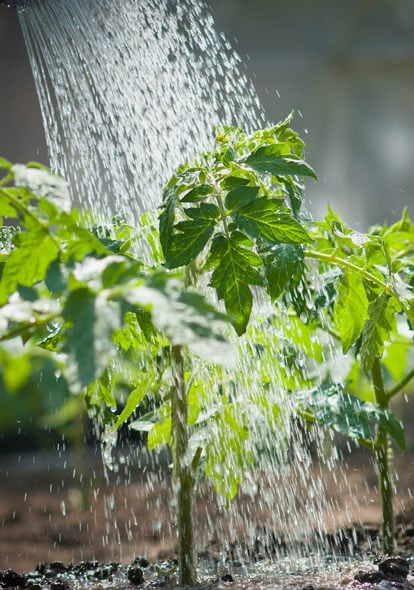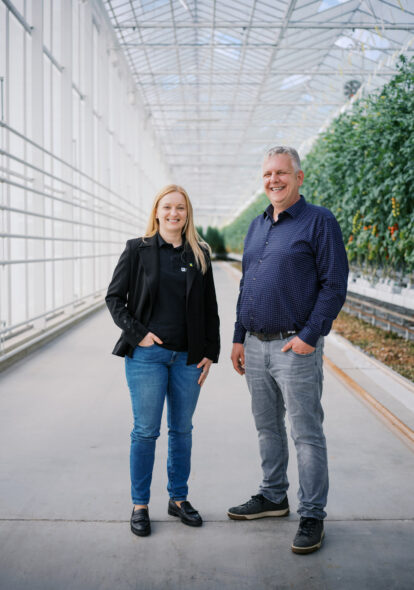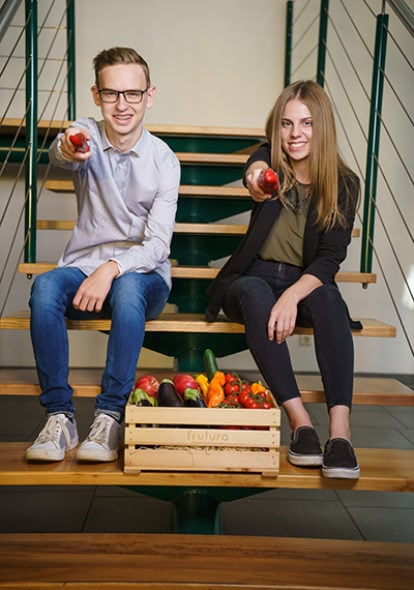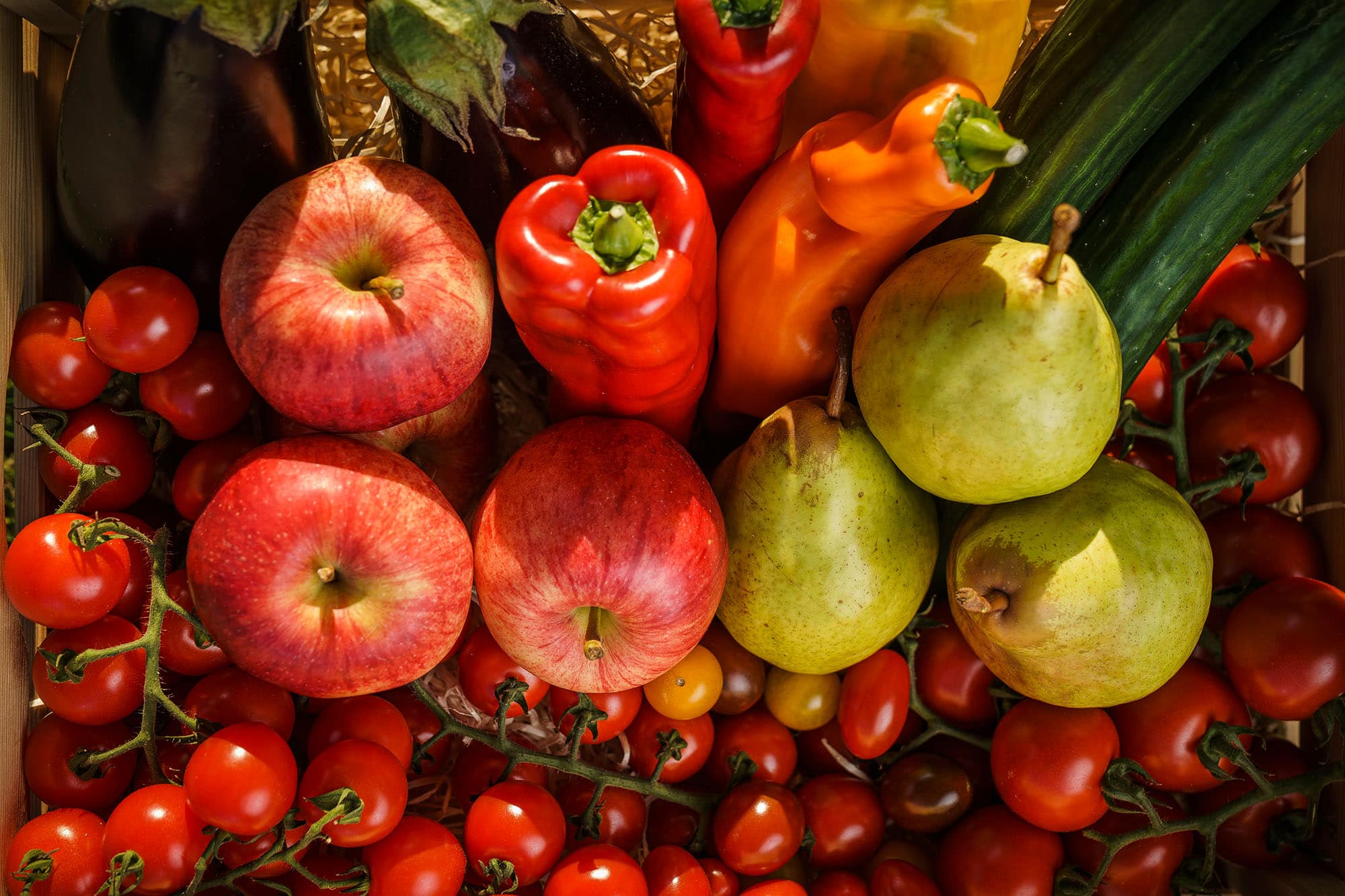Module 3
Vegetables & Quality assurance
“Eat yourself beautiful, smart and sexy!”…isn’t that what we all want? Never again starving for bikini body and swimsuit, never again desperately raiding chocolate stashes and then struggling with the famous yo-yo effect – just eat yourself healthy and beautiful. Just a pipe dream? No, because the motto is: know how!
Prim. Dr. Meinrad Lindschinger (Institute for Nutrition and Metabolic Diseases) shows which nutritional errors are circulating in the form of “miracle diets”. Furthermore he closely examines the newest diet hypes. The current nutritional situation in Austria is examined as well as the causes of overweight and obesity. In fact, we have never had so much food at our disposal, but we have also never had so many nutrition-related diseases.
Due to the increasing popularity of convenience products, the different types of “fast food” are also discussed. Often, convenience products are unfairly given a bad reputation. Therefore, you will get an overview of how correctly combined convenience products become valuable suppliers of nutrients.
With information about cooking methods and their effect on the nutrient density of the food, you can expand your knowledge as well as benefit personally. The information from this module is rounded out and illustrated with real-world examples. Enjoy the approximately 500 bites of functional eating® (natural foods are combined in such a way that stress doesn’t stand a chance during this seminar) during the 3 days of this module!
True to the motto “time is money,” Austrian consumers are also increasingly turning to eat-ready “to go” products. But anyone who thinks that “healthy” nutrition and a high standard of quality do not play a role here will be proven wrong by the numerous high-quality and innovative convenience products.
However, convenience products, especially in the fruit and vegetable sector, pose a major challenge. Starting with the raw food and ending with the presentation at the point of sale. Measures for quality assurance, hygiene and control play a decisive role in all areas of production and storage. With this module, you can expand your existing knowledge with valuable know-how about this demanding product range. You will be assisted by DI Joachim Massani (SPAR Österreichische Warenhandels-AG), who will explain hazards and quality parameters and provide you with practice-oriented information.
Nostalgia is the trend word when it comes to new furniture. We will prove to you that this trend has already conquered the vegetable sector too.
Do you like to reminisce about old vegetable varieties? Do you get nostalgic at the thought of the countless taste sensations from “back in the day”? Then this module about the revival of old varieties and the preservation of vegetable diversity will make your heart beat faster!
Mara Müller from the ARCHE NOAH association will take you on a historical journey through time, from the emergence of the first cultivated plants to a critical look at today’s vegetable production. The question, “Are all products organic, that are labelled like that?” as well as the most important guidelines for organic production will be clarified. The reasons for the decline in the number of varieties in the vegetable sector and also the measures to counteract this development are examined in detail here.
Another focus is on the unique work of the Austrian association ARCHE NOAH, which has made the preservation and marketing of “rarities” its mission statement. Colorful treasures such as the beet “Chioggia”, the cherry tomato mix or different colored potatoes are presented here, which can spice up your menu not only in terms of color but also taste. The hobby gardeners among you can also look forward to tips on handling unusual seed varieties.
True to the motto “from old to new”, variety is now not only returning to our private gardens, but also giving us lasting culinary memories.
Fruit Vegetables
You always wanted to know what the all-rounders tomato, bell pepper and cucumber have in common in the kitchen? Why they love a lot of sunlight and heat? No wonder, because the diversity of varieties, the high nutrient density and the countless varieties of enjoyment of these vegetables make them “everybody’s darling” in Austria. DI Doris Lengauer (Experimental Station for Special Crops in Wies) will dive with you into the history of the centuries-old use of tomatoes, peppers and cucumbers and then provide important information about cultivation, harvesting and proper storage. To ensure the quality and flavor of these tasty all-rounders, you can expand your knowledge with interesting tips and tricks on the proper handling of this delicate vegetables at the point of sale. In global terms, the tomato is one of the most popular vegetables – once a winner, always a winner! If you want to be infected by “tomato fever” too, then this module is just right for you.
Cabbage and root vegetables
If your hunger also regularly lures you to the refrigerator and your interest in true power tubers and power roots is aroused, then this module around the most popular varieties of cabbage and root vegetables in Austria will inspire you. Whether bright green in the case of broccoli, flaming red in the case of red beets or soft white in the case of “Peterwurzen” – these vegetable varieties offer not only valuable ingredients and an unforgettable taste experience, but also a real feast for the eyes.
On this sensory journey across the vegetable patch, expert Mag. Falk Rothermann (Feldbacher Fruit Partners) accompanies you and illustrates the most important conditions for maintaining quality – from care-intensive cultivation to storage at the grocer. A look back at the 1,000-year-old history and the long tradition of using cabbage and root vegetables, but also the comeback of some varieties in recent years and the consequently increasing diversity of varieties will be brought closer to you here.
Herbs and mushrooms
The use of herbs is both a tasty and beneficial way to excite the taste buds and to add even more spice to our lives. The diverse culinary uses make the heart of passionate gourmets beat faster. The Austrian food culture for example is enriched by regional mushrooms and to be honest: This makes every one of us quite lucky!
Maria Stix (Biohof Stix) and Julia Wolf (Biohof Wolf) will be happy to share their in-depth knowledge about herbs and mushrooms with you. In this module, the team will provide you with information about the most important kitchen herbs and how to handle them carefully. They will also inform you about the most common diseases.
What is white or brown, small and the French to thank? Yes, that’s right, the mushrooms! Here you will learn everything around production, cultivation, diseases, packaging and shipping, as well as practical cooking tips.
Leafy vegetables and asparagus
When the birds start chirping and the first flowers stick their heads out of the ground, it’s that time again: spring is on its way, giving the signal for the cultivation of many leafy vegetable varieties and for the Austrian asparagus season. Salad vegetables such as head lettuce, endive or “Vogerlsalat”, but also their green “relatives” spinach and chard are indispensable in Austrian cuisine.
Asparagus, the “king of vegetables”, is used in numerous ways to create special culinary delights and has already established itself as a common summer vegetable.
Whether it is about cultivation or harvesting, Dr. Anna Gasperl and MMag. Elisabeth Schrammel (University of Graz) will inform you. The importance for the Austrian market will be discussed, as well as the most important freshness characteristics of this demanding vegetable – in order to be able to provide the best possible quality for the customer. One freshness characteristic of asparagus, for example, is that it “squeaks” when rubbed together. So be careful: You will leave this module “squeaky happy”, because as we all know, good mood is contagious!
Potatoes, onions & garlic
The long journey of the potato in the 16th century from the “New World” (discovery of America) to Europe was worth the effort. Because whether firm-boiled or floury – potatoes are deservedly at the top of the menu in Austria. But onions and garlic are also an integral part of the Austrian cuisine and were already valued by the ancient Romans for their contents. Potatoes, onions and garlic: 3 tubers that could not be more different.
But what exactly makes each one so special? How does the cultivation take place? And what is it about fertilization and storage? In this module, these and many other questions about potatoes, onions and garlic will be answered in detail by the specialists Hans Stöckl (Dorfinger KG) and Ing. Christian Burger (agricultural division manager RLH Marchfeld). But you can also be inspired by culinary tips on the versatile use of these delicacies in the kitchen. And with one or the other trick for a pleasant breath after eating onions and garlic, this module will definitely “freshen up” your everyday life! We hope that you will not leave this module “crying” – in this case, we simply blame the onion!

















